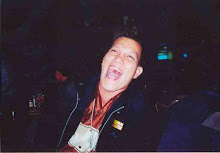Welcome to
P I C T U R E P E R F E C T
Each week a new theme will be posted here on Friday morning. You are invited to put up your best picture on your own blog with that theme in mind, and you do have the whole weekend to post your picture, so there is no rush
Remember it should be just ONE and ORIGINAL, taken by YOU,and not off the internet,
Then come back and leave a comment on this page in the comment box so that everyone can link to your blog and see your photo. Don't forget to OPEN your page to EVERYONE for that day.
By all means mention your camera and lens used, and if the picture has been altered or enhanced in any way, so we can all learn and improve our techniques.
Try and post a decent size picture on your blog page for an increased WOW factor. Often so much is lost or distorted if the size is too big or too small.
Remember this is NOT a competition, this about being creative having fun and being supportive of one another.
Out of the box thinking is encouraged.
~ Have FUN out there! ~
...oOo...
This week we're going back to school,
Where fun and creativity are the only rules.
Put on your creative thinking caps....
Because Rhyme Time is where it's at.
Pick a photo that is your fave.
Find a rhyming title for it's name.
It's not easy, take your time.


No comments:
Post a Comment